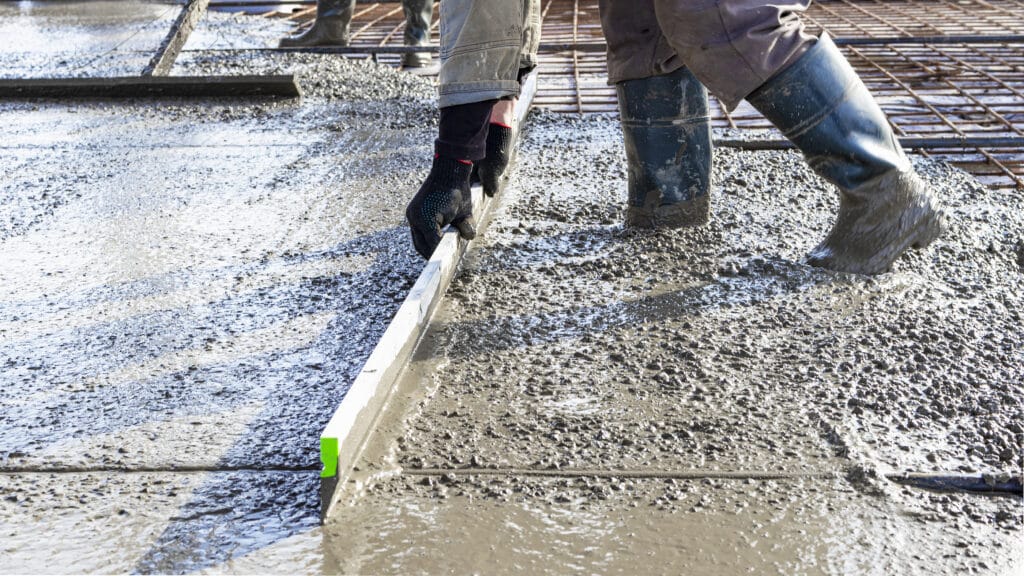As part of a structural frame, these concrete slabs transfer weight onto columns and walls.
Conventional slabs can be divided into two distinct types based on their span to depth ratio: single-beam slabs that transfer loads in both directions are known as one-way slabs while those supported by four beams across all four sides transferring these loads are two-way slabs.
Durability
Concrete can be made more durable by adding steel reinforcements, which increases tensile strength. These metal strands are typically interwoven throughout the concrete structure as reinforcement. Achieving greater strength through proper mix design, placement, finishing and inspection also contribute to this goal; however, durability ultimately depends on many external factors including environmental considerations and construction methods.
To ensure the durability of a slab, it must be placed on unmoved soil or compacted base that meets specific specifications set forth by a building engineer. A layer of sand or gravel should be added first for drainage purposes and movement control purposes. Concrete slabs Melbourne are flat surfaces used on building floors designed to withstand bending stresses caused by loads.
Without insulation, slabs can act as thermal bridges and unnecessarily conduct heat from one area of your house to the next. You could design it with underfloor heating in mind; however, this has high running costs and greenhouse gas emissions; for optimum results allow natural ventilation during summer evenings to release any heat trapped beneath it.
Thermal Mass
Concrete slabs make excellent thermal mass, and can be combined with passive solar design and high levels of insulation and airtightness for maximum effectiveness. Insulation should also be added on its underside in order to minimize heat loss; using thermal mass can significantly lower heating costs and energy consumption in hot climates.
Slab-on-ground construction is the primary method for including a concrete slab in a new house, though suspended slabs may also be possible on steep sites. A pole frame building may feature a combination of rolled fill and concrete pier systems instead.
Insulating concrete slabs has never been more accessible, with numerous materials such as foam, cellulose and recycled newspaper available for insulation. Prefabricated systems also exist – from expanded foam boxes made out of reused detergent bottles to ground-coupled insulators – while various options exist for heating and ventilating your slab, such as electric resistance heating coils that attach directly onto reinforcement before pouring concrete.
R-Value
The R-value of concrete slabs varies with their thickness and density, with higher-density concrete providing greater thermal insulation than lower density versions. A 6-inch slab has an R-value between 0.1 to 0.2 per inch which can help determine how much insulation a building requires.
As concrete has a large thermal mass, its slow response time helps it be energy efficient. Furthermore, this works great in climates with large daily temperature variations where concrete can invest warmth during the daytime before giving back at nightfall.
The recent H1 changes to the IECC/IRC have made it harder for larger buildings with higher area-to-perimeter ratios to meet R-value requirements for concrete slabs, particularly due to increased soil conductivity standards and adjustments to R-value calculation background systems for slab-on-grade R-values. Therefore, builders are required to add extra insulation in order to reach R-value standards and satisfy regulations.
Cost
Cost estimates for concrete slabs vary significantly based on size, thickness and finish specifications, as well as your region. Since DIY projects often go wrong when completed incorrectly, professional installation should always be the preferred choice; getting quotes from multiple providers before choosing one that matches your budget could save time and money in the long run.
A concrete slab can be constructed using either traditional or precast concrete and can be used for various applications. The type and amount of reinforcement will determine its durability and cost; to ensure optimal results it’s important that any slab is designed and built according to its intended use.
At first, it is critical that any equipment or furniture placed on a slab be capable of supporting its weight; structural engineers can assist here. Furthermore, it should be designed so that heat stored within concrete can dissipate naturally on summer evenings by naturally ventilating it.






